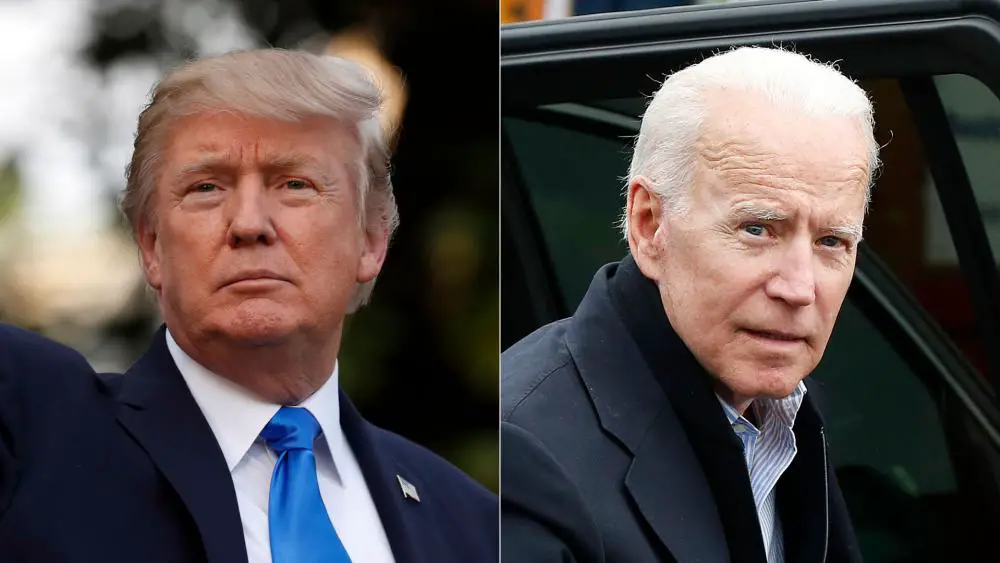There was a lot of chatter this week about a new Quinnipiac poll providing insight to hypothetical one-on-one matchups between President Trump and the entire field of 2020 Democratic candidates. Unsurprisingly, at this point in the race, every Democrat beats Trump on the national level. Some outlets have described this poll as a “landslide” victory for Joe Biden who leads President Trump by 13 points.
CBS News gives us a detailed breakdown of the numbers:
The Democrats’ lead ranges from five points for Cory Booker and Pete Buttigieg to 13 points for Biden. In between, Bernie Sanders leads Mr. Trump by nine points, Kamala Harris by eight, and Elizabeth Warren by seven.
Interestingly, while Biden beats Mr. Trump by a landslide in the Quinnipiac poll, his lead among his Democratic competitors has narrowed since April. One Iowa Democrat CBS News spoke to said she’s happy to have a lot of great options but some think maybe a little too many.
Biden beating Trump by 13 points? Bernie winning by 9? Booker and Buttigieg winning by 5? Do these numbers mean anything?
Trump says these polls are “fake news”
In a wide-ranging and extensive two-day interview with ABC’s George Stephanopoulos this week, President Trump referred to these early polls as “phony” and said they amount to little more than “fake news” for the media to report:
“On ‘Good Morning America’ today they had phony polling information,” Trump told Stephanopoulos. “I explained to you last night that it was phony, but you didn’t do anything about it. You should have, but it was late in the evening and perhaps you didn’t get a chance.”
“But, why does it bother you so much?” Stephanopoulos asked as the two entered the Oval Office.
“Because, it’s untrue,” Trump shot back. “I like the truth. I’m actually a very honest guy.”
Trump was referring to a report in the New York Times which claimed that Trump campaign internal polling showed him losing various early primary states to Biden, among others, and that the President was instructing his surrogates to lie about it.
However, does Trump have a point in saying the polls are “phony” this early in the game? Contrary to his claims that the polls “don’t exist,” they surely do exist, but do they mean anything? Democratic candidates will revel in them as proof that they have a shot at winning the general election next year. However, as the entire media establishment was burned by relying heavily on polls in 2016, how seriously should we take state polls or any early general election polls as a reliable gauge on the electorate?
Analyzing early general election polls
The short answer when asked if these polls mean anything is generally “no,” these polls don’t really mean anything in the grand scheme of an election that is some 17 months away. Better still than simply saying they don’t mean much, is to provide some actual analysis and historical comparison, as FiveThirtyEight did:
In the runup to the 2016 presidential election, this same question came up, and FiveThirtyEight analyzed general election polls from 1944 to 2012 that tested the eventual nominees and were conducted in the last two months of the year before the election (so for 2012, that would be November and December of 2011). On average, these polls missed the final result by 11 percentage points.
The last presidential election featured one of the more accurate sets of early polls for this point in the cycle: Hillary Clinton led Donald Trump 46.2 percent to 41.2 percent in an average of all polls conducted in November and December 2015, missing the eventual national popular vote margin by about 3 points.3 (The actual result was Clinton 48.0 percent, Trump 46.0 percent.)
But that’s more the exception than the rule, as the table above shows. And remember, these are polls conducted at least five months later in the cycle than where we are now. Jump back to roughly this point in the 2016 cycle, for example, and Clinton was ahead of all eight of her hypothetical GOP opponents in a May 2015 Quinnipiac poll, with a whopping 50-32 advantage over Trump.
As FiveThirtyEight found, polls this early gave Hillary Clinton an 18-point lead over Donald Trump in May of 2015. Based on that number, you could argue that Joe Biden is polling worse than Hillary was since he only has a 13-point advantage right now according to Quinnipiac.
There is a lot that will change between now and Election Day in 2020. There are a dozen Democratic debates, there are general election debates between President Trump and the Democratic nominee, there are events beyond anyone’s control in foreign and domestic policy, etc. There are simply too many variables to account for when trying to accurately predict election results this far from an election.
The bottom line is that the Trump campaign is watching the same polling data, and they know where they’re most vulnerable regardless of what the President says on television. Democrats, on the other hand, know where they have the best chance are taking back some traditionally blue states that Trump won last time but they also know not to get too hyped about polls which predict “landslide” victories 17 months from Election Day.
